Crikey, He Cared

Steve Irwin didn’t just love animals—he lived for them. Whether he was wrestling a croc, gushing over a venomous snake, or whispering sweet nothings to a tarantula, his energy was electric, and his mission was dead serious: protect wildlife at all costs. While most of his adventures unfolded under Aussie skies, his passion for conservation had no borders. Steve adored the United States—not just for its wild landscapes but for the creatures teetering on the edge of survival within them.
Through shows like The Crocodile Hunter and Bindi the Jungle Girl, he brought attention to underdogs across the U.S.—and even purchased land here through his Wildlife Warriors organization to protect critical habitats. His legacy now lives on through Terri, Bindi, and Robert, who continue his mission with that same khaki-clad fire. Here are 10 wild American animals Steve Irwin would’ve gone absolutely barmy for—many of which he already championed in his too-short time with us.
1. American Alligator
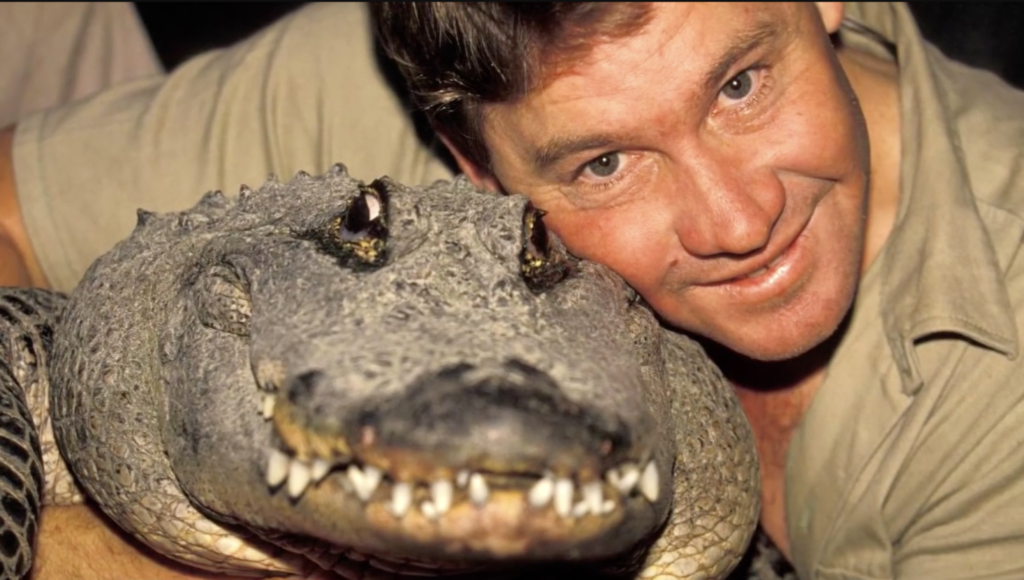
Eyes like marbles, jaws like a trap, and a tail that could knock you into next Tuesday—Steve Irwin didn’t just respect the American alligator, he relished it. You’d catch him wading waist-deep in the Everglades, pointing to a 12-footer and hollering, “Look at her—what a stunner!” These armored beasts have been around since the dinosaurs, and Steve loved reminding us they survived extinction events, hurricanes, and humans with little more than instinct and muscle.
By the 1960s, overhunting and habitat loss had pushed them to the brink, but protections helped rebound the species to over 1.3 million in Florida alone. Steve would’ve celebrated that success—then turned around and warned us about growing urban sprawl, golf course invasions, and illegal poaching. He’d likely link arms with the crew at Gatorland to show how coexistence is possible through rescue, relocation, and education. Today, his family carries that torch: Robert Irwin recently featured alligator behavior and rescue on national television, using his dad’s same enthusiastic tone to promote understanding. With a baby gator balanced on his forearm, Steve would’ve grinned: “They’re not monsters—they’re miracles with teeth!”
2. Gila Monster
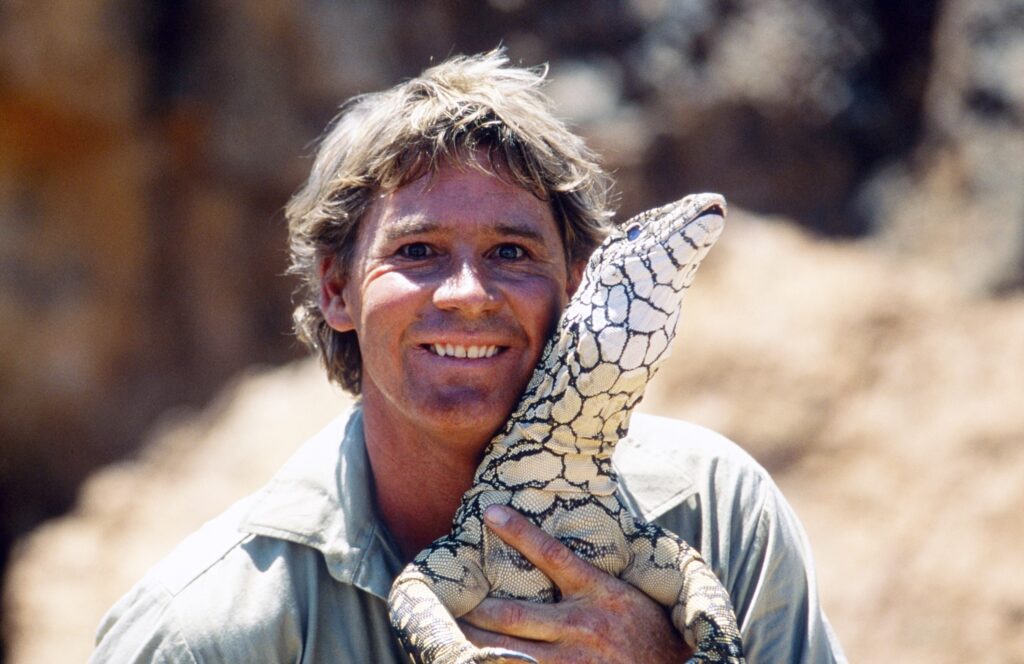
Bright orange, beaded skin, and venomous jaws that latch on and don’t let go—Steve Irwin would’ve been over the moon for the Gila monster. Found slinking through the deserts of the American Southwest, this slow-moving lizard is a tank in reptile form. Steve would’ve dropped to the ground beside one, arms spread wide, whispering, “She’s a stunner, mate—like a living fossil!”
Although protected, Gila monsters face habitat loss from sprawling development, illegal pet trade, and climate shifts altering their desert ecosystems. Steve would’ve joined forces with herpetologists and advocates like those at the Arizona Game and Fish Department and helped promote research showing how Gila monster venom is being studied for use in diabetes treatment. Today, his family helps spread that same message—Robert uses his platform to educate followers about venomous reptiles and their importance to medical science. Steve would’ve crouched beside a sun-warmed rock, lifting one gently and pointing out its bone-like scales and flicking tongue. “She’s not dangerous—she’s a desert doctor in disguise!” he’d beam.
3. Prairie Dog
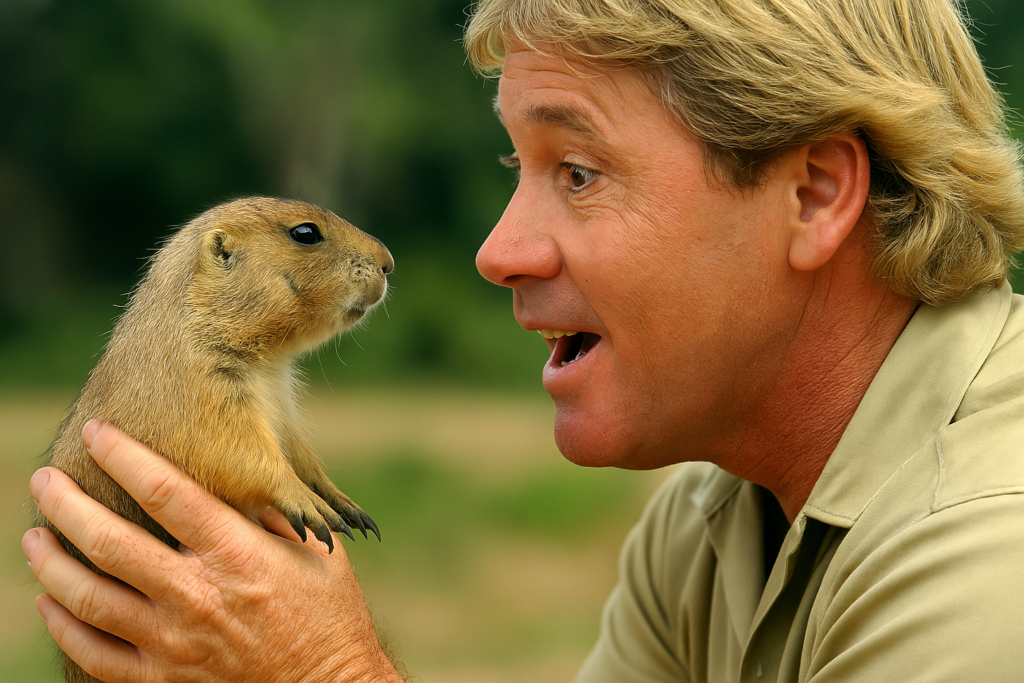
In 2007, a developer in Colorado bulldozed a field—only to discover, too late, it was home to one of the last thriving prairie dog colonies in the county. That incident sparked outrage from local conservationists, and Steve Irwin would’ve been right there in the dust, boots planted, arms waving wildly. “They’re not pests—they’re the pulse of the prairie!” he’d shout. These pint-sized herbivores build vast underground cities with nurseries, escape tunnels, and even air vents. Their presence supports over 150 other species—from the endangered black-footed ferret to burrowing owls and snakes. Wipe them out, and entire ecosystems collapse.
That’s exactly why the Irwin legacy hasn’t let them fall through the cracks. Through Wildlife Warriors, Terri, Bindi, and Robert continue Steve’s mission of spotlighting unsung heroes like these. Steve would’ve thrown his full weight behind the Prairie Dog Coalition, campaigning against mass poisonings and advocating for conservation easements and plague vaccinations. He’d show us aerial footage of once-vibrant colonies turned to barren tracts and explain how the plague—spread by fleas—can wipe out thousands in days. “That one’s Digger, that one’s Cheeky Pete,” he’d grin. Because for Steve—and now his family—saving prairie dogs isn’t about cuteness. It’s about protecting the unsung engineers of the American plains.
4. Hellbender
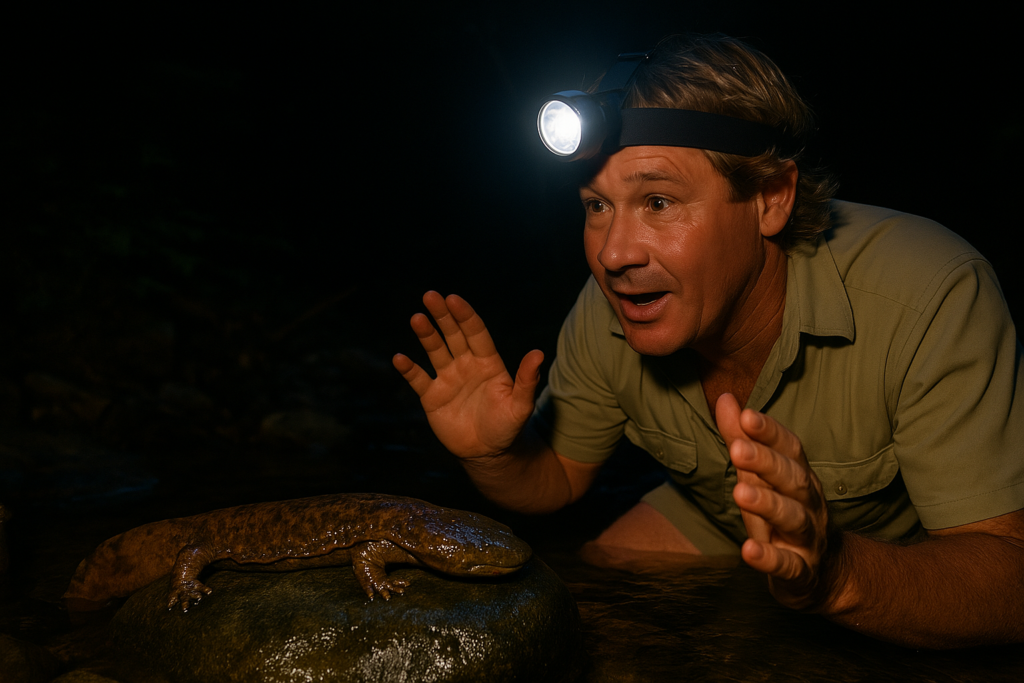
Beneath the chilly streams of Appalachia hides a creature so ancient, so bizarre, it could’ve crawled straight out of the Jurassic. The hellbender—North America’s largest salamander—is part slime, part legend, and all Steve Irwin material. You can picture him knee-deep in a mountain creek, hands sweeping under flat rocks, whispering like he’s uncovering buried treasure. “Crikey, would ya look at her—wrinkly as a grandma’s elbow and just as precious.” With their flat heads, frilly gill flaps, and stealthy movements, hellbenders look like a science experiment gone right.
But these secretive salamanders are in trouble. In some rivers, their numbers have plummeted by over 80%. Hellbenders breathe through their skin, which means when water gets polluted, silted, or too warm, they suffocate—making them living indicators of stream health. Steve would’ve gone full throttle backing groups like the Saint Louis Zoo’s Hellbender Conservation Center, which raises young salamanders in labs and reintroduces them into protected rivers. He’d show us eggs clinging to pebbles and explain how amphibians are our early warning systems for environmental collapse. The Irwins still champion freshwater species—and you just know Steve would’ve emerged from the current with a grinning, gooey hellbender in hand saying, “She’s not pretty, mate—but she’s priceless.”
5. Red-Crowned Parrot

Steve Irwin used to say he was afraid of only one animal: the parrot. “They’ll bite your ear off before you can say crikey,” he once joked, half-laughing and half-serious. But fear never stopped him from protecting what mattered. In the U.S., wild parrots like the endangered red-crowned parrot—native to the Rio Grande Valley—are clinging to survival. Habitat loss, illegal pet trade, and shrinking migration zones have made them one of the most vulnerable bird species in North America.
Steve would’ve stood up for them just like he did for crocs and cobras. He’d spotlight habitat corridors in South Texas and partner with groups like the American Bird Conservancy to combat poaching and promote reforestation. Today, Robert Irwin handles parrots at Australia Zoo with ease, and Terri and Bindi advocate against illegal wildlife trafficking—continuing Steve’s fight from every angle. He may have flinched at a surprise nip, but he never flinched at doing what was right. “You don’t have to cuddle it to care about it,” he’d say, probably holding a squawking macaw and grinning through the pain. “She’s got attitude, mate—but she deserves to fly free.”
6. Florida Panther
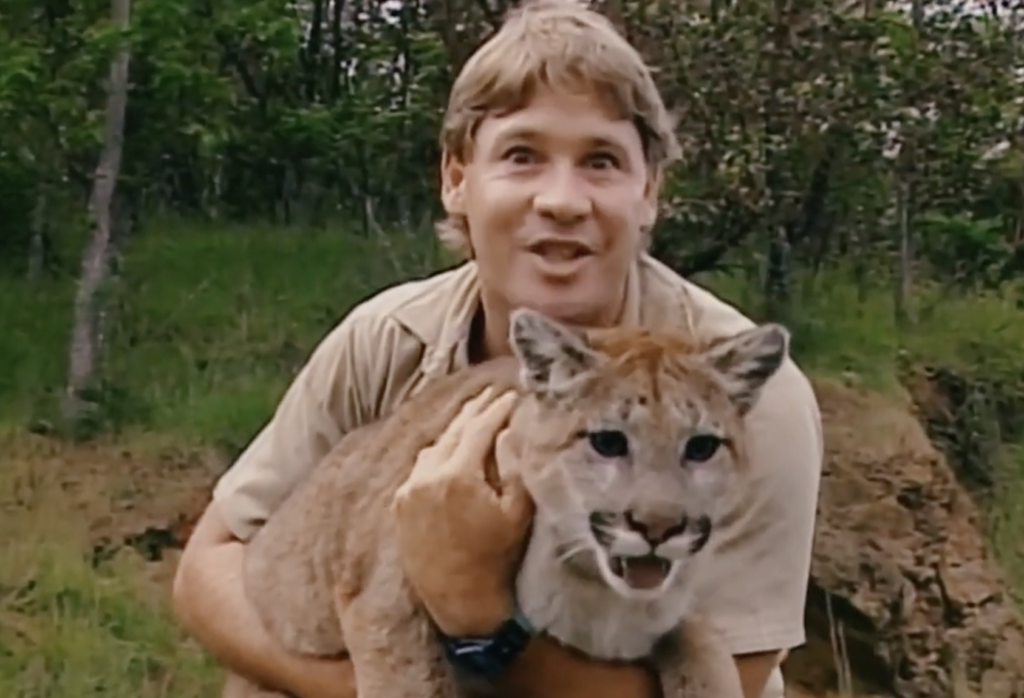
The Florida panther moves like a ghost—silent, low-slung, a whisper in the mangroves. Steve Irwin would’ve been spellbound. He’d track it at dawn, mud up to his knees, crouched beside claw-scarred trees and snapped palmettos, whispering, “She’s out here, mate… and she’s watchin’ us first.” These sleek, solitary cats once ruled the southeastern U.S., but by the 1980s, fewer than 30 remained. Habitat loss, inbreeding, and collisions with cars nearly wiped them out.
Today, there are about 200 left in the wild—but they’re not safe yet. Vehicle strikes are still the leading cause of death, and genetic problems from bottlenecked ancestry continue to plague their survival. Steve would’ve backed programs like the Panther Recovery Implementation Team, spotlighting highway crossings, land corridor preservation, and heart-tugging footage of panther kittens born in the wild. And the Irwins are still roaring for predators like this—Robert has advocated for species rewilding and genetic rescue, while Terri continues to speak out about the urgent need for large carnivore corridors. Steve would’ve crouched in the dirt beside a scat sample, grinning madly and explaining how apex predators sculpt entire ecosystems. “She’s not just a cat—she’s the keystone,” he’d beam.
7. Manatee

Gentle, slow-moving, and heartbreakingly endangered—the manatee is the kind of animal Steve Irwin would’ve fought for with his whole heart. These “sea cows” graze along Florida’s waterways, munching seagrass and moving with the kind of peaceful grace that Steve adored. He would’ve floated alongside one in crystal-clear water, pointing to its scars and saying, “These aren’t battle wounds—they’re proof she survived us.”
In 2021, over 1,100 manatees died in Florida alone—many from starvation after pollution destroyed their food sources. Steve would’ve sounded the alarm and thrown his energy behind efforts like the Save the Manatee Club, advocating for seagrass restoration, slow-boat zones, and water quality protections. His family continues to champion marine species, with Terri and Bindi working with aquatic researchers and Robert filming underwater documentaries. Steve would’ve made sure the world saw manatees not just as gentle giants—but as urgent reminders that saving wildlife starts with saving their home.
8. American Bison

At one point, there were over 30 million bison roaming North America. By the late 1800s? Fewer than 600 remained. That kind of man-made devastation would’ve had Steve Irwin riled up—and fiercely hopeful. He would’ve stood atop a sweeping prairie, eyes fixed on a distant herd, shouting, “They’re not just survivors—they’re ecosystem builders!”
Today, American bison are making a slow but powerful comeback thanks to groups like the American Prairie Reserve. Steve would’ve jumped into the restoration efforts, explaining how bison grazing patterns restore soil health, encourage native plants, and feed countless species. He’d champion partnerships with Indigenous tribes and highlight the bison’s cultural importance. With his arms spread wide and dust in his boots, Steve would’ve told us, “If we can bring back the bison, we can bring back balance.”
9. Gray Wolf

Few animals stir up emotion like the gray wolf. Revered, hunted, misunderstood—this apex predator is the backbone of every ecosystem it inhabits. Steve Irwin would’ve defended it passionately, using his signature excitement to challenge the myths. “She’s not the villain, mate—she’s the keystone,” he’d say, tracing paw prints through the snow.
After near-eradication in the 20th century, wolves have returned to places like Yellowstone, triggering what scientists call a trophic cascade—where their presence benefits everything from elk herds to riverbanks. Steve would’ve worked with the Defenders of Wildlife to keep these protections strong, fighting against rollbacks and fear-based policy. With a pack howling in the distance, Steve would’ve reminded us that every creature has a role to play—especially the ones we’re taught to fear.
10. North American River Otter
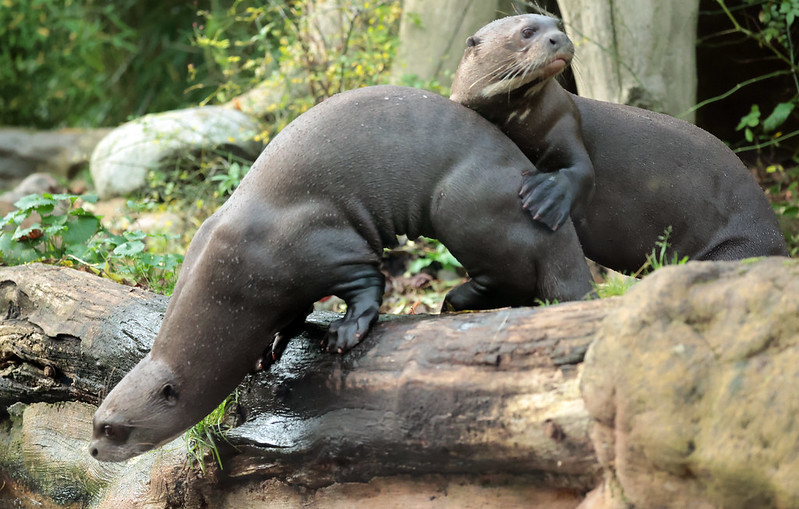
Cheeky, playful, and endlessly entertaining—Steve Irwin would’ve been smitten with river otters. These sleek swimmers don’t just charm—they clean up. As bioindicators, otters rely on clean water and healthy fish populations, making them signs of a thriving ecosystem. Steve would’ve crouched on a muddy bank, watching them tumble and wrestle, saying, “They’re the larrikins of the river—but they’re serious business, too.”
Otters face threats from habitat degradation, pollution, and development. Steve would’ve championed groups like the National Wildlife Federation, helping restore wetlands and river corridors across the U.S. His camera crew would’ve followed a family of pups learning to swim, while his narration reminded us that behind every splash is an urgent call to protect what’s left. River otters weren’t just animals to Steve—they were joyful proof that clean water means life.
11. California Condor

With a wingspan over nine feet and a back-from-the-brink story that reads like a miracle, the California condor is the kind of animal Steve Irwin would’ve rooted for with everything he had. He’d stand at the edge of a canyon, pointing skyward, his voice cracking with awe: “That’s not just a bird—that’s a second chance.”
In the 1980s, there were only 27 condors left in the world. Thanks to captive breeding and reintroduction efforts led by groups like the Ventana Wildlife Society, hundreds now soar over California and Arizona. Steve would’ve celebrated every single chick hatched, every flight reclaimed. He’d show us what lead poisoning and habitat loss look like—and then rally viewers to protect what’s left. Because for Steve, every animal that clawed its way back from extinction proved that when humans choose to help, we can do incredible things.
12. Black-Footed Ferret
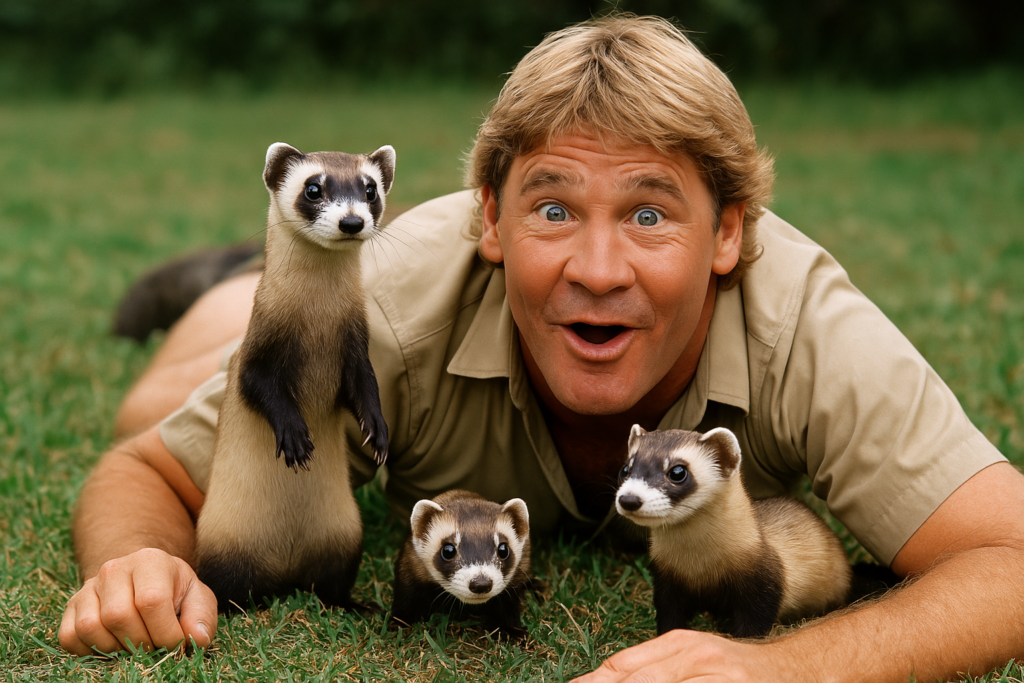
Once thought extinct, the black-footed ferret made one of the most dramatic comebacks in American conservation. Steve Irwin would’ve absolutely flipped for this masked, wiry weasel, known as the “prairie ninja.” Sleek, elusive, and fiercely specialized, black-footed ferrets rely almost entirely on prairie dog colonies for food and shelter—meaning their survival is deeply tied to those same ecosystems Steve loved defending.
In the 1980s, a single surviving colony was discovered in Wyoming, sparking a rescue mission that included captive breeding, rewilding, and years of meticulous fieldwork. Steve would’ve spotlighted the U.S. Fish and Wildlife Service’s efforts and shown ferret kits being released into the wild—his voice full of hope and fire. “She’s a ghost, mate—back from the brink!” he’d say, cradling one with reverence. Today, fewer than 400 roam the wild, but every one is a testament to tenacity. Steve would’ve championed their comeback as proof that even the most fragile species can fight their way home with the right protection.
His Legacy Still Roars

Steve Irwin left behind more than a zoo and a few wild catchphrases—he left a blueprint. His life showed us what it looks like to fight hard, teach loudly, and care without compromise. But the mission didn’t end when Steve’s boots hit the ground for the last time.
Today, Terri, Bindi, and Robert Irwin are still building on his dream—protecting wild spaces, rescuing animals in crisis, and turning camera lenses into conservation tools. The ten American animals featured here still face uphill battles, but they also have something powerful behind them: the legacy of a man who loved them enough to roar, and a family brave enough to carry that roar forward. And if Steve could see it all now? He’d flash that crooked grin and say, “We’re just getting started, mate.”


